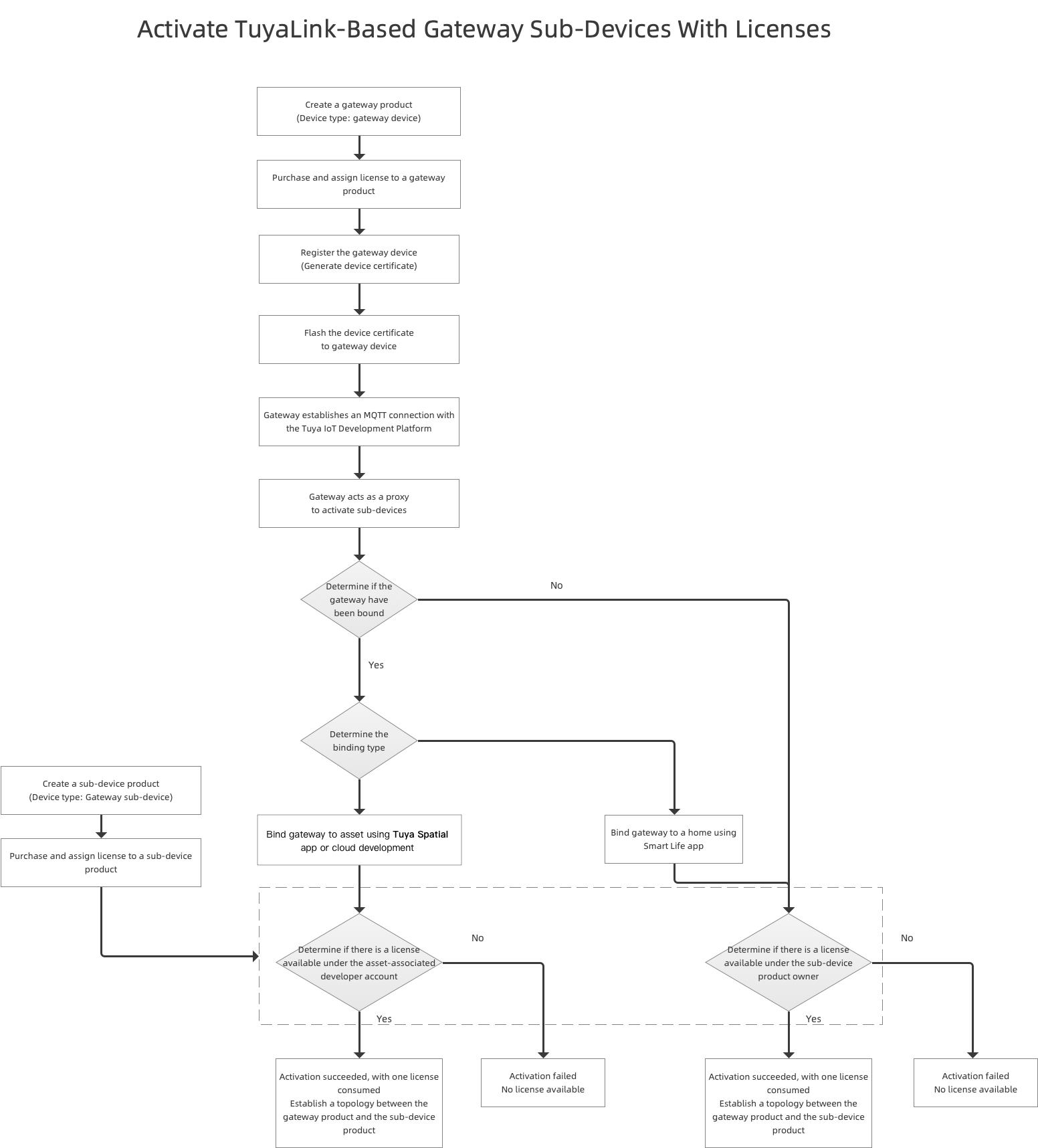License Consumption for Activating Sub-Devices Via Dynamic Discovery
Last Updated on : 2025-07-23 08:35:49download
If you choose the TuyaLink solution to connect gateways or sub-devices to the Tuya Developer Platform, you may use dynamic discovery to activate sub-devices. This topic describes the license consumption for sub-device activation in terms of different use cases.
For industry: Tuya Spatial app and cloud development
There are two cases when a gateway activates a sub-device through dynamic discovery.
Case 1: Gateway has been bound to an asset
A gateway device has been bound to an asset of a cloud project (Cloud > Development > Cloud Projects > Assets). When the gateway activates a sub-device, this consumes the license of the associated sub-device product under the developer account that the asset belongs to.
Scenarios:
- The gateway product and the sub-device product are created under one developer account, and dynamic registration is used to activate sub-devices.
- The sub-device product is created under the developer account that owns the gateway-bound asset.
Case 2: Gateway has not been bound to an asset
A gateway device has not been bound to any asset. When the gateway activates a sub-device, this consumes the license of the owner of the associated sub-device product.
Scenario: The gateway product and the sub-device product are not created under the current developer account.
For smart home: SmartLife app
When a gateway activates a sub-device, regardless of the gateway binding state, this consumes the license of the owner of the associated sub-device product.
Limitations
- A gateway that has been bound to a home cannot be bound to another home or any asset.
- A gateway that has been bound to an asset cannot be bound to another asset or any home.
Reference process

For more information, see Gateway and Gateway Sub-device Connectivity.
Is this page helpful?
YesFeedbackIs this page helpful?
YesFeedback





